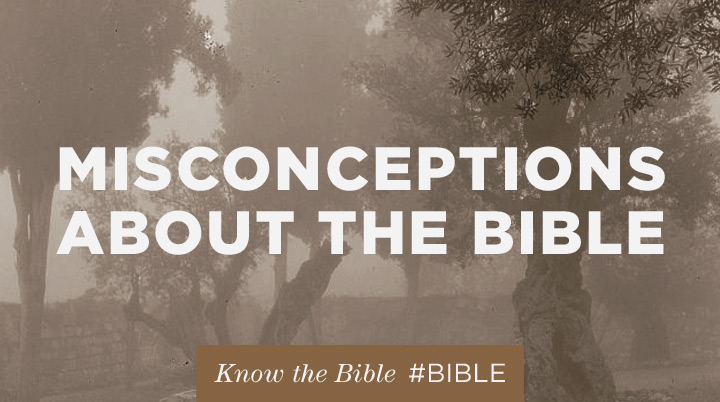Latest
-
Objections to the Christian Faith from the Unchurched and De-Churched
 Tue Dec 02, 2014
Tue Dec 02, 2014
by Resurgence -
Craig Groeschel: We Innovate for Jesus
 Tue Oct 14, 2014
Tue Oct 14, 2014
by Resurgence -
Mark Driscoll: Revelation
 Tue Oct 07, 2014
Tue Oct 07, 2014
by Resurgence -
RESURGENCE LEADERSHIP #034: JOHN PIPER, WHY I TRUST THE SCRIPTURES, PART 2
 Tue Sep 30, 2014
Tue Sep 30, 2014
by Resurgence -
Resurgence Leadership #033: John Piper, Why I Trust the Scriptures, Part 1
 Tue Sep 23, 2014
Tue Sep 23, 2014
by Resurgence

Archives
8 misconceptions about the Bible

“How can you trust the Bible when it’s been translated so many times?” “Isn’t the Bible full of mistakes and contradictions?” Pastor Mark Driscoll debunks 8 common misconceptions about the Bible in this fourth installment of his blog series, which provides a guided tour of topics such as what is the Bible, where the Bible came from, and how to interpret the Bible.
Over the years I’ve come across many misconceptions about the Bible. Some of these are due to rampant biblical illiteracy, and others to simple misunderstandings about how the Bible was copied and transmitted over the years. Many misconceptions about the Bible can be cleared up simply by learning how to interpret the Bible, but some require a more detailed response. In this post I’ll briefly look at some common misconceptions.
1. “You can’t trust the Bible because it’s been translated so many times”
This misconception assumes that we don’t have an abundance of manuscript evidence in languages such as Greek and Hebrew supporting the Bible. As a result, it makes the added assumption that the Bible may have started out in some original ancient languages a long time ago, but has since been translated and re-translated over and over again into so many different languages that we can’t trust it anymore. This is simply not true. We have access to literally thousands of manuscripts and fragments that are used in translating the Bible, not a long chain of degraded translations.
2. “The Bible is full of mistakes and contradictions”
This misconception is usually just thrown out without any supporting evidence. Always ask for a specific example when you encounter this misconception. But be prepared, because some people may have specifics or even several examples, and you’ll want to know how to respond. In reality, though, to say the Bible is full of mistakes and contradictions usually stems from a lack of understanding of principles of biblical interpretation. Many capable scholars have addressed questions about Bible difficulties.
We have access to literally thousands of manuscripts and fragments that are used in translating the Bible.
3. “You can make the Bible say whatever you want it to say”
This only applies if one takes a relaxed view of Scripture, such as a relativistic attitude that rejects that the author had real intent and meaning. Also, if we treat the Bible fairly in our interpretation, following the basic principles of hermeneutics, then we can’t make it say what we want it to say. I once heard a seminary professor say that the Golden Rule of interpretation is, “Seek to interpret a text just as you would like others to interpret your words, whether written or spoken.”
4. “The Bible says…”
This misconception claims the Bible says something specific, when it really doesn’t. As an example, some will state that the Bible says, “God helps those who helps themselves.” Sorry, that was Ben Franklin, not the Bible. Some will claim the Bible supports the abuse of women, that it encourages slavery, or some other major allegation. There’s a long list of things people say the Bible supports when in reality it doesn’t.
5. “Power-hungry church councils decided what to include in the Bible”
The idea is that at some point, usually much later than the time of the New Testament, church councils met and included whatever books and ideas in the Bible would best help consolidate their own power. This is simply false.
There’s a long list of things people say the Bible supports when in reality it doesn’t.
Church councils formalized and officially recognized writings that God’s people had already accepted and used as inspired Scripture for hundreds of years, in the case of the New Testament, and thousands of years in the case of the Old Testament. Some of these councils include the Council of Laodicea (A.D. 363); the Council of Hippo (A.D. 393); and the Council of Carthage (A.D. 397). Church councils simply acknowledged the Scriptures that were already known and trusted by Christians everywhere.
6. “The New Testament was written hundreds of years after the time of Jesus”
The implication of this misconception is that so much time passed between the writing of the Bible and the actual events it records that there’s no way it could be accurate. Supposedly, the gap between the reality and the writing allowed ample time for corruption, legends, and even myths to develop. In actuality, the time between the New Testament events and when they were recorded is very short, especially when compared with other ancient documents. Paul wrote 1 Corinthians, for instance, within about 25 years of Jesus’ life. That’s not enough time for myth or legend to develop, because eyewitnesses were still living and would have objected to what Paul wrote and the church taught if it was historically inaccurate.
The earliest surviving manuscript fragment of the New Testament, from the Gospel of John, dates to about A.D. 130. That’s very close to when John actually wrote his Gospel, between A.D. 70–100. And although it’s still being verified, New Testament scholar Daniel Wallace reports that a fragment from Mark may very well be dated to the first century, making it an even earlier fragment than the one from John.
7. “The Bible is an old, outdated list of rules that no longer apply”
While the Bible is old, it is definitely not outdated. Not only is it filled with practical wisdom, but it lays out God’s plan of redemption for humanity. Its insights are timeless, relevant, and useful in everyday life. A quick reading of Proverbs, for example, will yield much wisdom and timeless advice.
8. “The Bible excluded other more accurate manuscripts”
Dan Brown’s novel The Da Vinci Code popularized the idea that there were originally numerous competing “gospels,” and church leaders chose their favorites. Supposedly, the four Gospels in the New Testament are biased, and in reality there were dozens or maybe even hundreds of other gospels to choose from. You’ll hear about the Gospel of Thomas, the Gospel of Barnabas, the Gospel of Philip, or even the Gospel of Judas. Occasionally these “other gospels” get a burst of media attention, as though they somehow seal the doom of the New Testament.
While the Bible is old, it is definitely not outdated.
There are three lines of evidence that argue against the reliability of these other “gospels.” First, the manuscript evidence for them is terrible, especially compared to the manuscript evidence for the New Testament Gospels. Second, all of these other writings were written down much later than the New Testament. Third, the ideas they present are often completely foreign to what the New Testament Gospels are about, sometimes offering up advice that is just plain bizarre.
In the case of the Gnostic Gospel of Thomas, it’s not even in the style of the New Testament Gospels, instead serving as a sort of collection of sayings. Some of the material is orthodox, while other parts are strange and outlandish. For example, in Saying 114 of the Gospel of Thomas, Peter supposedly says, “women are not worthy of life.” Jesus responds not by clearing up Peter’s mistake, but by saying he, Jesus, will make the woman into a man so she can then enter the kingdom of heaven. That hardly sounds like the gospel we see throughout the rest of Scripture.
When it is rightly understood and wisely interpreted, we can be confident that the Bible is accurate, reliable, and trustworthy. The Bible is uniquely and solely God’s completely trustworthy revelation to us today.
Want to learn more? See Pastor Mark’s previous post in this series, 7 key principles for interpreting the Bible.
Join us next week for the fifth installment in this series.